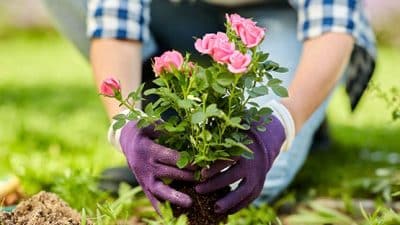
In the BIP survey’s state-by-state listing of honey bee colony loss, Virginia ranked 20th of the 47 reporting states for the highest percentage of honey bee colony loss over the winter of 2013-2014. On the whole, scientists believe that those losses are likely caused by a combination of multiple stressors including poor bee nutrition, loss of forage lands, parasites, pathogens and exposure to pesticides. Virginia’s most recent winter colony losses also followed below-average temperatures in January, February, March and April 2014.
“This BIP survey confirms what we already know—we continue to lose bees at an alarming rate in Virginia,” said Keith Tignor, Virginia State Apiarist at VDACS. “These pollinators are essential for the development of our crops and crucial to the state’s $52-billion agriculture industry. In fact, insect-pollinated plants are the direct or indirect source of approximately one-third of our human diet.”
On average, a single hive containing 40,000 to 60,000 bees is able to pollinate two acres of a crop. Without a sufficient numbers of bees, farmers may face crops that are inadequately pollinated, resulting in decreased production and reduced quality. Honey bees are also beneficial as stewards of the environment. A honey bee may fly up to two miles from its hive collecting nectar and pollen. They are general pollinators visiting wild flowers, trees and other plants in bloom in farmlands, pastures, forests and wetlands. Pollination by honey bees helps to ensure healthy and diverse plant life throughout the Commonwealth of Virginia.
VDACS wants all Virginians to be aware of the state’s honey bee colony losses. Here are a few things anyone can do to help attract, protect or increase the state’s pollinators:
- Select plants that are known to attract pollinators in your area. Many of these will be native. To determine which plants are best for attracting pollinators in your region, go to http://pollinator.org/guides.htm and enter your zip code for area-specific information. Planting a variety that bloom at different times will provide pollen and nectar sources throughout the year.
- Read the label on all pesticides products and follow the instructions for their use. The label is the law and these instructions and related precautions are intended to protect the user, other people, animals and the surrounding environment by minimizing the potential risk of exposure to the pesticide. To learn more about the proper use of pesticides, visit the Virginia Pesticide Safety website.
- Consider becoming a beekeeper. Classes and workshops are regularly sponsored by local beekeeping groups, private entities and public agencies. In 2012, the Virginia General Assembly created the Beehive Grant Fund for the purpose of promoting the establishment of new beehives in the Commonwealth. So far in 2014, the state has awarded more than 275 grants to Virginia beekeepers. For more information on getting started in beekeeping, please contact [email protected].
Prior to the release of the BIP national colony loss survey, VDACS conducted a similar survey that started in the winter of 2000 to 2001. Average honey been colony winter losses in Virginia have been 31.6 percent over the 14-year period between 2001 and 2014.
About the Bee Informed Partnership (BIP) Survey
The BIP survey is based on the response of 7,183 U.S. beekeepers that managed 564,522 honey bee colonies in October 2013, which is 21.7 percent of the country’s 2.6 million colonies.
The survey is conducted by BIP, in collaboration with the Apiary Inspectors of America and the United States Department of Agriculture, to determine winter and summer honey bee colony losses and management practices of beekeepers. Results of the survey are used in developing best management practices for improving honey bee health and annual survival.
Virginia had the second highest number of respondents (635) to the national survey. Only Pennsylvania had a great number of survey participants with 812 respondents.










